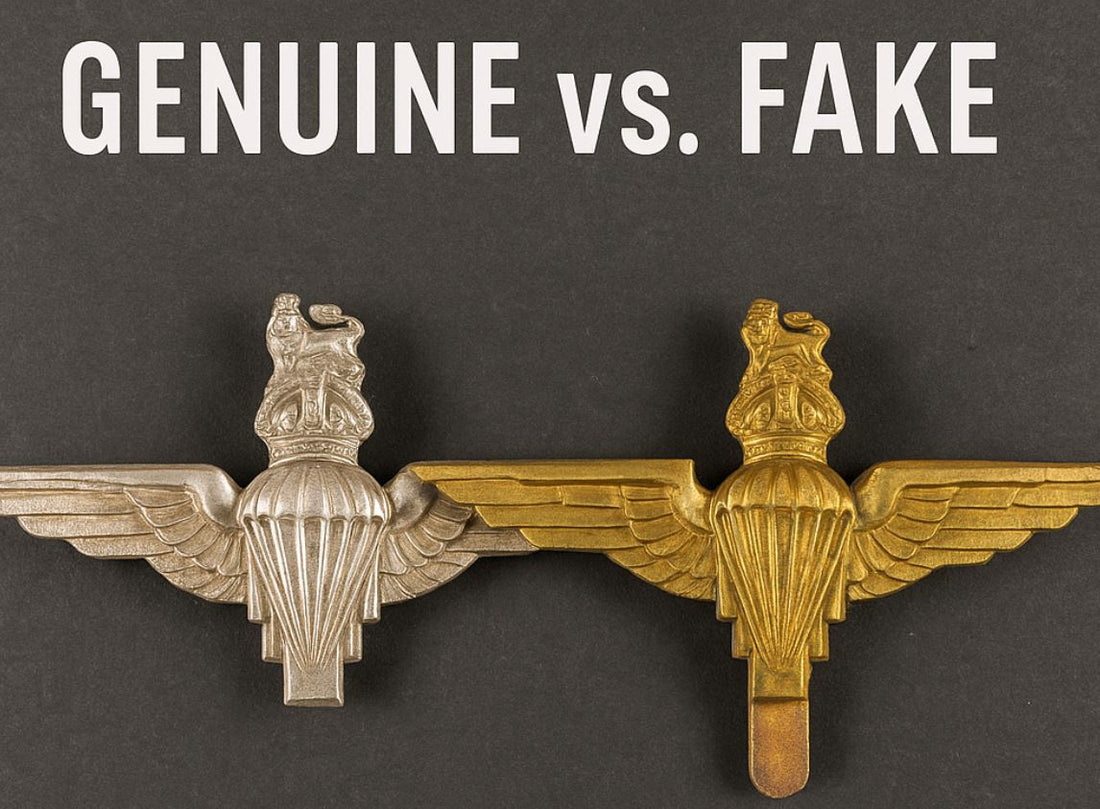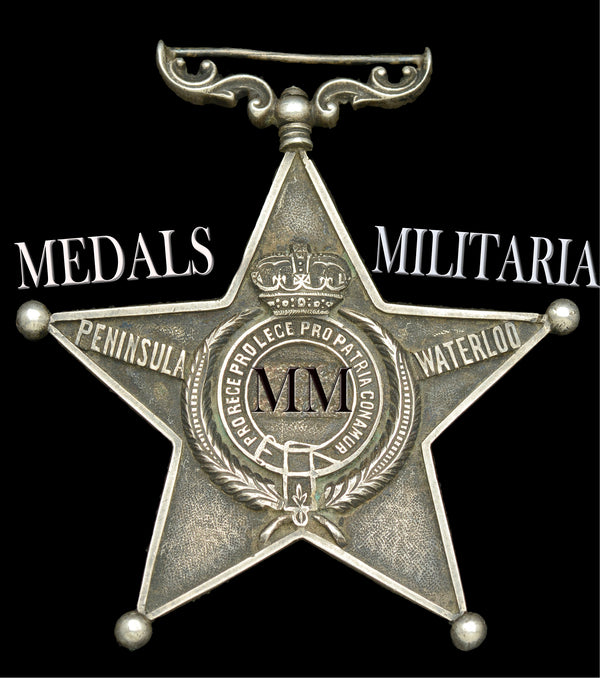
Spotting the Difference: Genuine vs. Fake WW2 British Parachute Regiment Cap Badges
Share
Original World War two Parachute Regiment cap badges are scarce, are highly sought after, thus command premium prices. As a result, they have been heavily faked. Here is a breakdown of the variations of the fake badge that I have come across, and the features to look out for.
The analysis is kept simple, with good quality images, so that this post can be used as a free and quick reference for all, rather than having reams of text and descriptions, behind subscriptions and logins.
Original British Army and Airborne cap badges can be found here. Original British Army Cap Badges. Buy with confidence.
Why This Badge?
The British Parachute Regiment beret badge, introduced during the Second World War, holds deep historical significance. It represents one of Britain’s most daring wartime innovations — airborne infantry. Today, this badge is a prized collectible, but it's also one of the most commonly faked. Knowing how to identify an original is critical for serious collectors and dealers alike.
All details described here are my own work. All images, details, and features are from original beret badges, and from an array of fake badges that I've had the misfortune of forking our for.
A Genuine WWII Parachute Regiment Beret Badge: Key Features
The beret badge shown here is a genuine example of the British Parachute Regiment badge, wartime manufacture (sealed pattern 1943), based on its details, construction, and finish. Let's look a bit closer and pull out the details.

Front (Obverse) Features:
Material: Die-struck plated brass (early versions like this one), with consistent finish and tarnish from age. The plated badges are often seen with plating wear exposing substrate material (very hard to fake). Consistent age patina is key. Some people do tend to strip and polish their badges, not advised.
Design fidelity: The King's crown is sharply detailed, showing clear definition in the orb, arches, and cross pattée. The lion and crown show crisp relief, with a confident strike.
Parachute canopy: Strong ribbing with even spacing and precise vertical fluting. Note the centre cord cross-over in this example, more on this later in the post.
Wings: The feathering is symmetrical, with clean lines and sharply defined tips and deep relief at the base of each wing segment.
Back (Reverse) Features:
Lugs (fixings): Copper lugs firmly attached, positioned just behind the wings—characteristic of wartime badges intended for wear on the beret. The brazing appears old and may be slightly oxidized.
No maker marks: Many genuine WW2 Parachute Regiment badges were unmarked; this alone does not indicate authenticity, but the construction method strongly supports it.
Back surface: No casting marks, pitting or spalling—common telltales of fakes or later cast reproductions.
Fake beret badge types
There are numerous fake beret badge designs in circulation. We'll now work through the commonly seen examples and detail the features to look out for. I will give the fake badges a type number (Type X) for the purpose of this thread only to differentiate them. They are not known by this naming convention anywhere else.
Type 1 fake
Commonality - very common
Easily identifying features
Overhanging wing tips.
Excess material - spalling - inside left wing (as facing).

Type 2 fake
Commonality - very common
Easily identifying features
Overhanging wing tips.
Messy convergence of canopy strings.

Type 3 fake
Commonality - less common
Easily identifying features
Overhanging wing tips.
Die flaw in canopy.

Original beret badge versus fake badges quick comparison of construction:

Around the badge comparisons - original versus fake features:
Let's look at the key features in more detail. Starting with the Imperial Crown and lion seen on the World War Two era beret badges.
Originals (top) with better lion definition, fake (bottom) lions have scrambled faces and more rib lines. Crown definition and shape is easily distinguishable on the fakes. Early brass originals had voided Crowns.

UNDER CONSTRUCTION - COME BACK SHORTLY FOR MORE FREE, VALUABLE INFORMATION OF THESE BERET BADGES.
